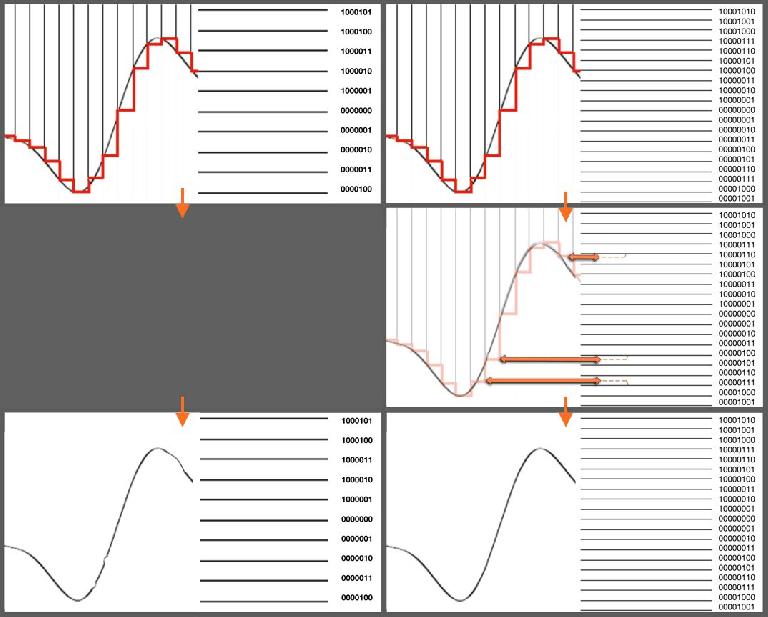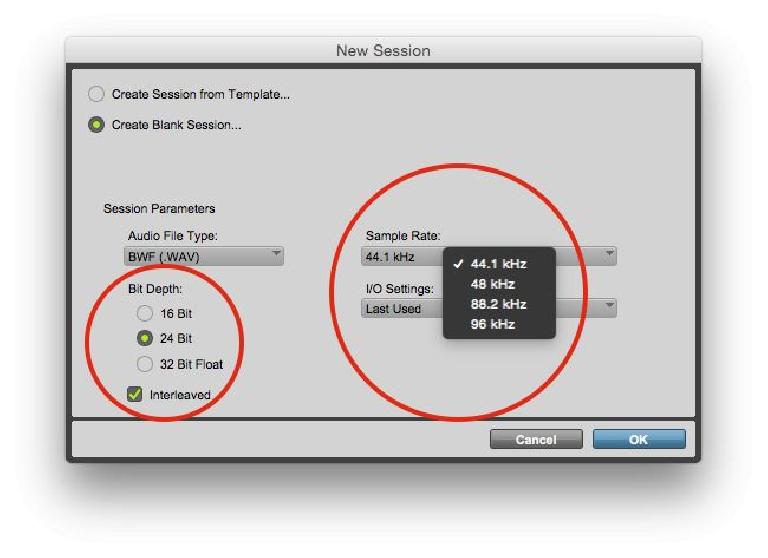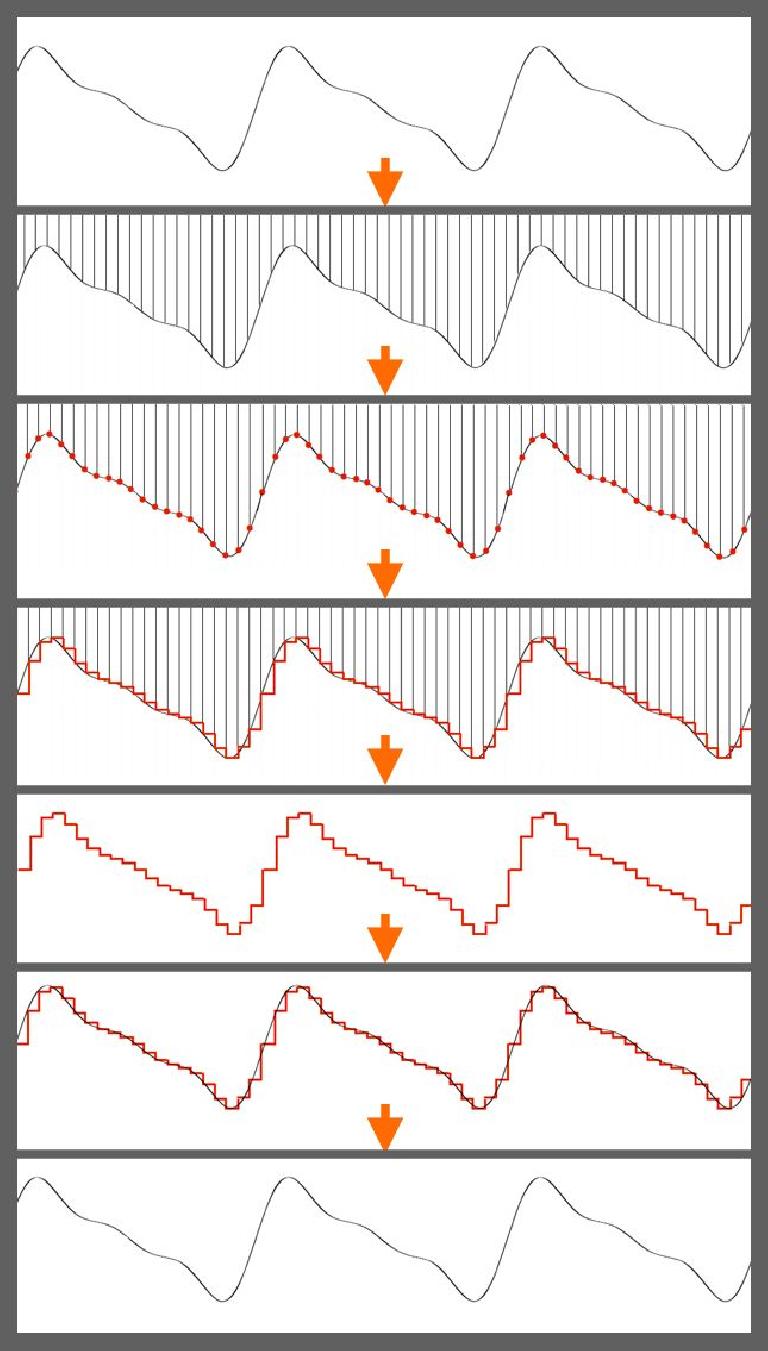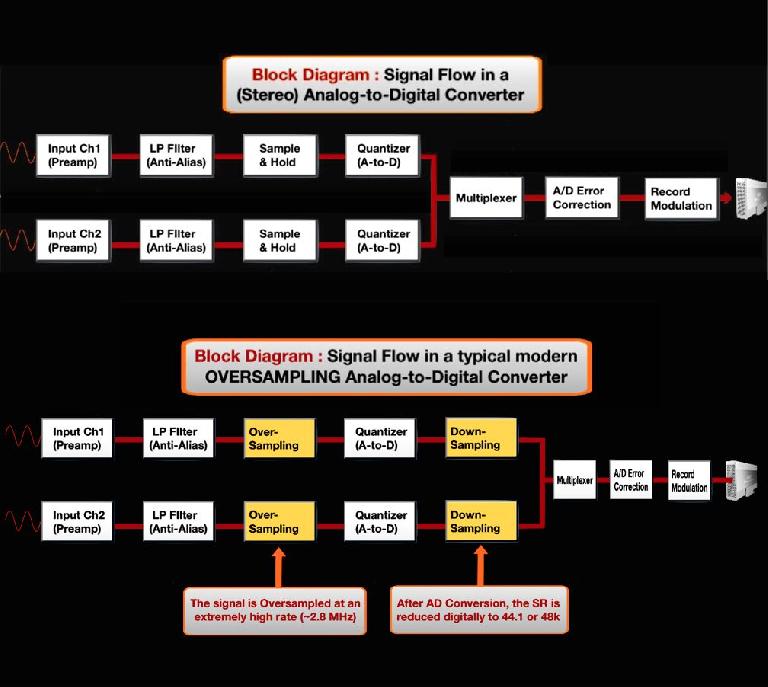یکی از مباحث را بیشتر مراکز صنعت صوتی که در اطراف وضوح صوتی دیجیتال. است سی دی با کیفیت هنوز هم به اندازه کافی خوب است، یا باید تمام دیجیتال صدا پایبندی به گزینه های رزولوشن بالاتر که در حال حاضر در دسترس است؟ خوب، هشدار اسپویلر
The (Very Simplified) Basics
این دو محک از کیفیت صوتی دیجیتال هستند سرعت نمونه برداری و وضوح کمی. سرعت نمونه برداری پایین
برای سال ها، این دو معیار استاندارد شدند. سی دی
Please Sir, May I Have Some More..
اما اگر استاندارد اصلی (بازدید کنندگان) ملاقات کرد (حداقل ادراکی) الزامات نظری، به همین دلیل پاسخ از قطعنامه های بالاتر؟ آیا واقعا لازم است به استفاده از قطعنامه بیت بالاتری در دسترس در حال حاضر
A Bit of This, a Bit of That
خاموش برای اولین بار، بخش آسان
با این حال، تفاوت در این است که به عنوان بزرگ به عنوان شما ممکن است انتظار
و در عین حال، همه (حداقل همه جوانب مثبت) رکورد 24 بیتی! واسه چی؟ خوب، من حدس می زنم جواب است، چرا که نه؟ رزولوشن 24 بیت را ندارد
اما آنچه در مورد همه وزوز در مورد
Sample This
هنگامی که آن را در دسترس بالاتر نمونه نرخ (88.2k، 96K، 176.4k، 192K) می آید، وجود دارد
تئوری های صوتی دیجیتالی است که در واقع بسیار زیبا
اما برای به انجام رساندن این کار را بدون یک دست قابل شنیدن
مبدل های دیجیتال مدرن اند، برای سال در حال حاضر، در واقع در یک نرخ بسیار بالاتر نمونه، به مدت طولانی از بین بردن نیاز برای کسانی که فیلتر brickwall مزاحم. اما نرخ نمونه از نتیجه فایل های صوتی دیجیتال هنوز هم ممکن است 44.1k و یا 48K، به دلیل فرکانس صدا بالاتر نمونه
اما هنگامی که شما را ضبط 96K، شما می
The Ultrasonic Conundrum
خوب، این یکی از آن مناطق که در آن مردم خوب است
Golden Ears..?
اندازه گیری تست می تواند
Wrap-Up
در نهایت، مردم همچنان به استفاده از هر قطعنامه که احساس می کنند مناسب است. هر چند تقریبا همه پروژه های در سطح حرفه ای 24 بیتی، نرخ نمونه انتخاب وسیعی از 44.1k سنتی تر و 48K 96K به، و گاهی حتی 192K (هر چند برخی از مهندسین محترم احساس می کنید که 192K اعتیاد به مواد مخدره بیش از هر چیز است).
گاهی اوقات انتخاب برای شما ساخته شده






 © 2024 Ask.Audio
A NonLinear Educating Company
© 2024 Ask.Audio
A NonLinear Educating Company
Discussion
I have actually only done the first part with most of my (soft) synths and have been surprised how well it sounds with synth sources at at 88..2 in a 44.1 project.
You're right, software instruments are one application where oversampling can potentially make a more noticeable difference—especially with creative applications that involve more extreme sample manipulation, which can sometimes clearly benefit from higher sampling rates. I didn't get into that for two reasons—the article was intended to be focused on playback/distribution more than processing, and it was already long and technical enough (especially before I edited it down!).. ;-)
As I've always understand it, most plug-ins that oversample (for maximum clarity with certain kinds of intensive processing, like some modeling emulations) will be fine doing that internally (if you enable it), regardless of the session settings..
I also didn't get into the whole issue of people listening to all those pristine hi-res audio productions as MP3s/MP4s, but I guess that's an issue for another day.. ;-)
Cheers,
Joe
Want to join the discussion?
Create an account or login to get started!